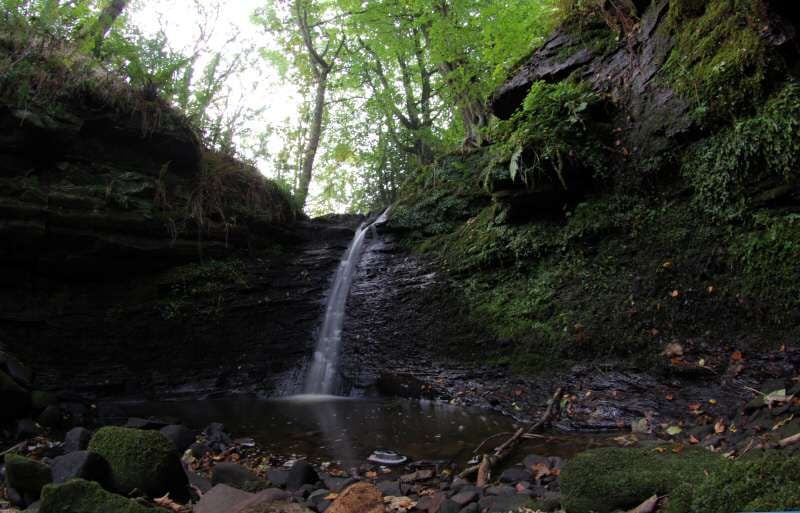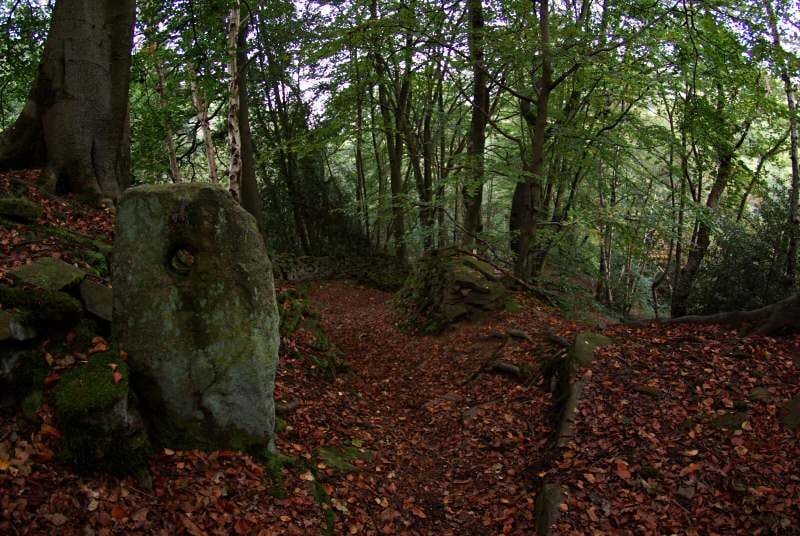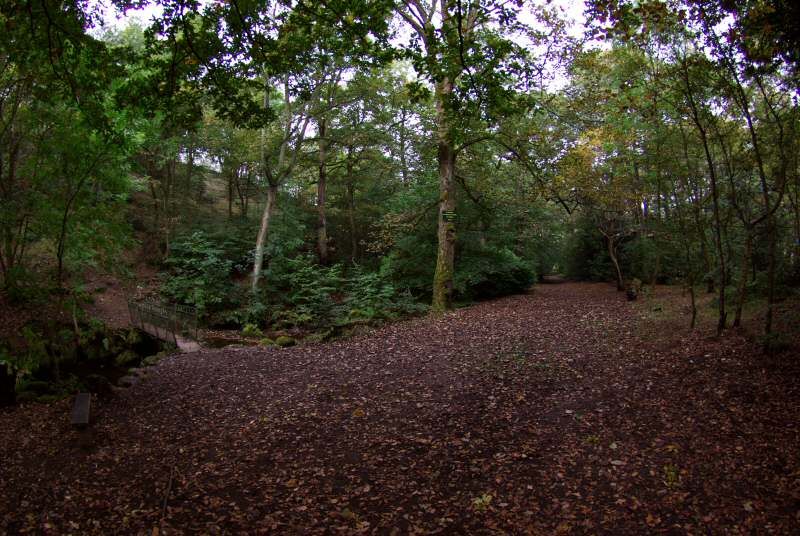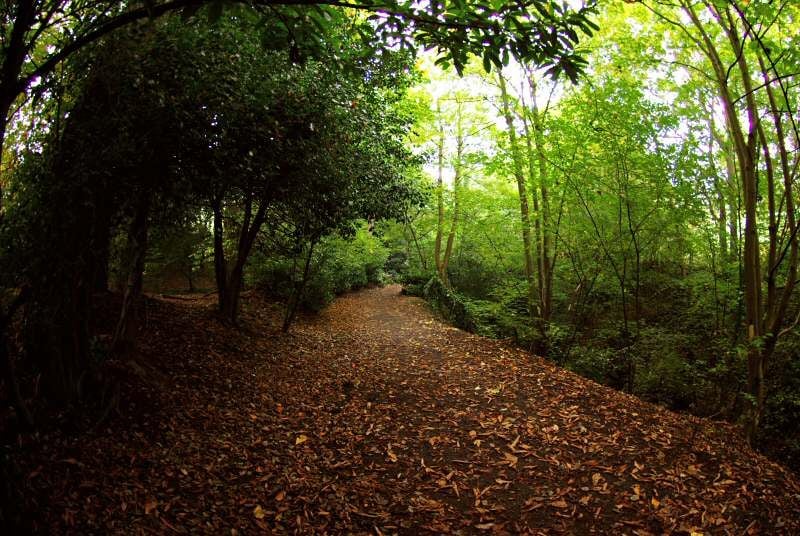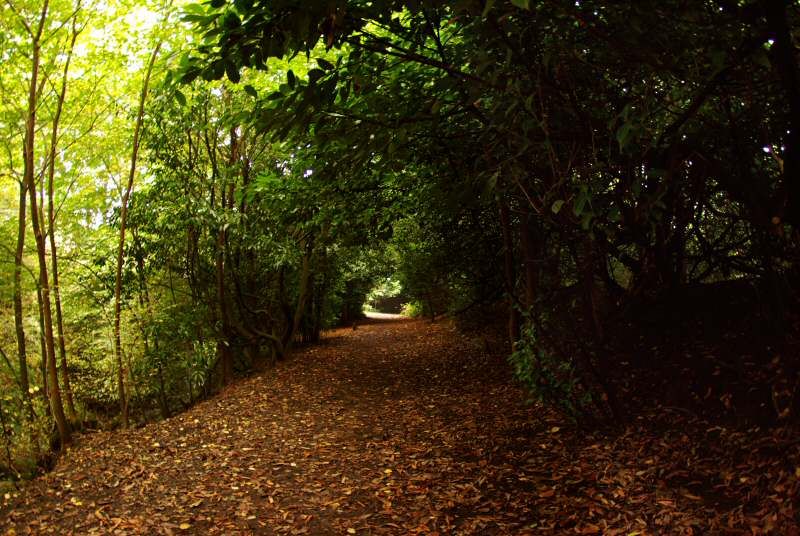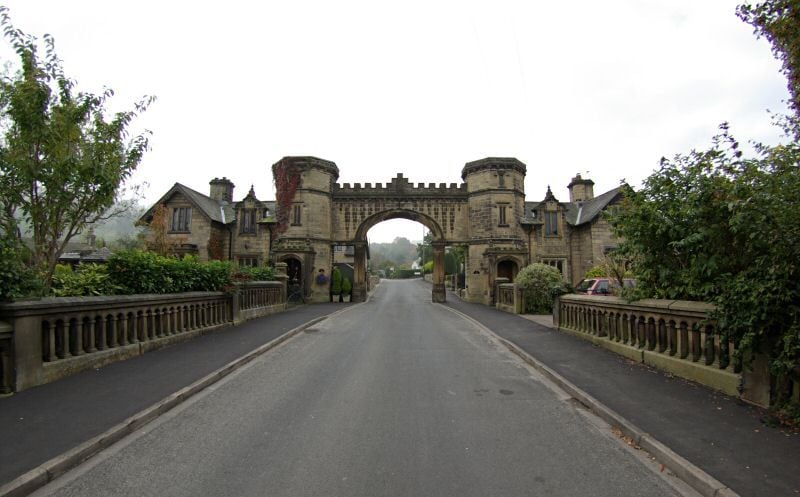Lumb Clough
Land at Sutton Clough, (Sutton Hall Estate) was conveyed to the Parish Council in November 1933 (approved 1934) together with maps and fishing rights in Lumb Clough dated 1963. Mr. Ernest Turner donated the gift of land to the Parish Council for the benefit of the public. Six and half acres, part of the Sutton Hall Estate and adjoining Sutton Clough and a right of way from the lodge gates up the carriage drive
Sutton Parish Council maintains the woodland on behalf of the village. We endeavour to reduce risk to an acceptable level along access routes as far as this is practicable given the nature of the terrain and the character of the site.
However, we want Lumb Clough to retain its natural characteristics and therefore it presents the usual risks associated with walking in woodland and countryside.
These risks may be greater during or following adverse weather conditions and may be more significant for certain people e.g. the very young or the infirm.
While visitors to the woods may stray off paths, they do so at their own risk and should therefore take particular care.
Children
We would like Children to grow up valuing woodland because of the fun they have had in them, just like many of their parents and grandparents.
The woods can accommodate the sorts of activities that children typically wish to pursue in woodland.
Children should be supervised and we rely on parents exercising their own judgement on the risks that may be relevant to their children in the wood, especially if they are to be left unaccompanied.
Dogs
Many of our visitors are local walkers, often with dogs. We welcome dog-walkers but stress the importance of dogs being kept under control and on leads/leashes.
Fouling of paths by dogs is a problem; this detracts from public enjoyment of the woods and may present a health risk. We encourage dog owners to take action to prevent this problem.
Anti-social behaviour
Inevitably, a few of those who visit our woods do so with antisocial practices in mind.
To provide a permanent staff presence, to deter such behaviour would be unworkable, yet to take no action would be to undermine the principle of encouraging visitors to enjoy the experience of visiting our woods.
Our policy is to work closely with local people, local police and where possible to foster a sense of community pride, ownership and use of the sites to deter those who seek to pursue anti-social activities.
Ancient and Semi-Natural Woodland
Ancient woodlands are those which have had a continuous woodland cover since at least 1600 AD to the present day and have only been cleared for underwood or timber production. It is likely however that a wood which was in existence in 1600, had already been in existence for centuries.
The term semi-natural woodland applies to all woodland stands which do not obviously originate from planting. They can be classified into stand types which are ecologically distinct associations of trees, shrubs and herbs determined by edaphic (soil characteristics), climatic
Lumb Clough Smeltmill and Wood Drying Kiln Details
The monument lies to the west of a confluence of two streams in the base of a narrow wooded valley. It includes the buried and standing remains of a small water-powered lead smeltmill, together with its associated reservoir and wheelpit. The site also includes the standing remains of a small wood drying kiln. Investigated and partly excavated to floor level by the Northern Mine Research Society in 1973. Lumb Clough smeltmill is an example of a simple one hearth smeltmill. Water, taken directly from Lumb Clough Beck, filled a small, now silted reservoir originally 10m by 30m which is terraced into the valley side, to power an overshot or high breastshot waterwheel to the dam before returning to the beck via a culverted tailrace, which is also included in the scheduling. The smeltmill, measuring 5.5m north-south by 4.6m wide, is visable as wall footings and retains in situ settings for a pair of bellows (originally powered the waterwheel) just to the south of the stone foundations of the ore hearth. The hearth is flanked by a pair of 0.9m high gritstone 'keeper stones'. the 1973 excavation of the wheelpit, which lies on the east side of the smeltmill, showed it to be 6.7m by 0.45m by 2.1m deep with a stone flagged floor, with a partly collpased tailrace chamber at its north end. It has since been partly infilled, although the low arched (0.3m) end of the tailrace culvert c.20m to the north of the smetlmill remains visible and is still issuing water.
Approximately 15m north east of the ore hearth a well preserved drystone structure is built into the bank of a former steam course. Key-hole shaped in plan, it measures 1.4m in diameter and 1,8m deep, tapering towards the base. This is believed to be the remains of a wood drying kiln used to dry wood to produce 'white coal' which was often mixed with peat and coal, and used as fuel in are hearths. The surrounding area retains small quantities of scattered slag; both vitreous (black) slag and grey slag are visible.
To change the appearance of a block, such as the way in which it is laid out and the width of its columns, click on the Change Layout button on the block toolbar, to the right of each block. You can show and hide many of the elements that make up a block by clicking Block Settings on the right hand toolbar and going to the Elements tab. In Block Settings you can also change other aspects of how a block looks, including margins, colours, animations and background images.
You can change the order that blocks appear on your page using the up and down arrow buttons on the right hand toolbar, or you can drag the entire block using your mouse.
